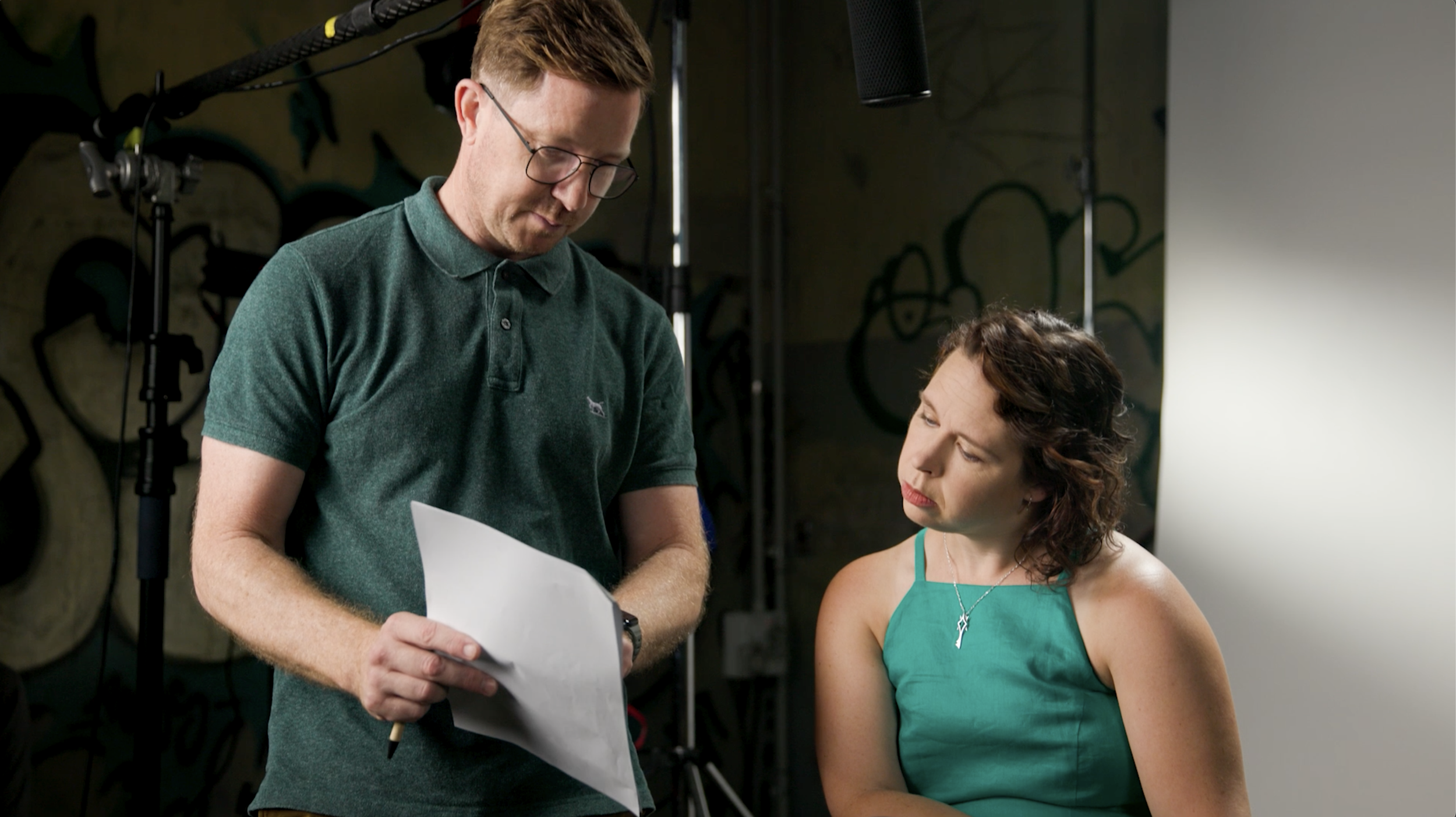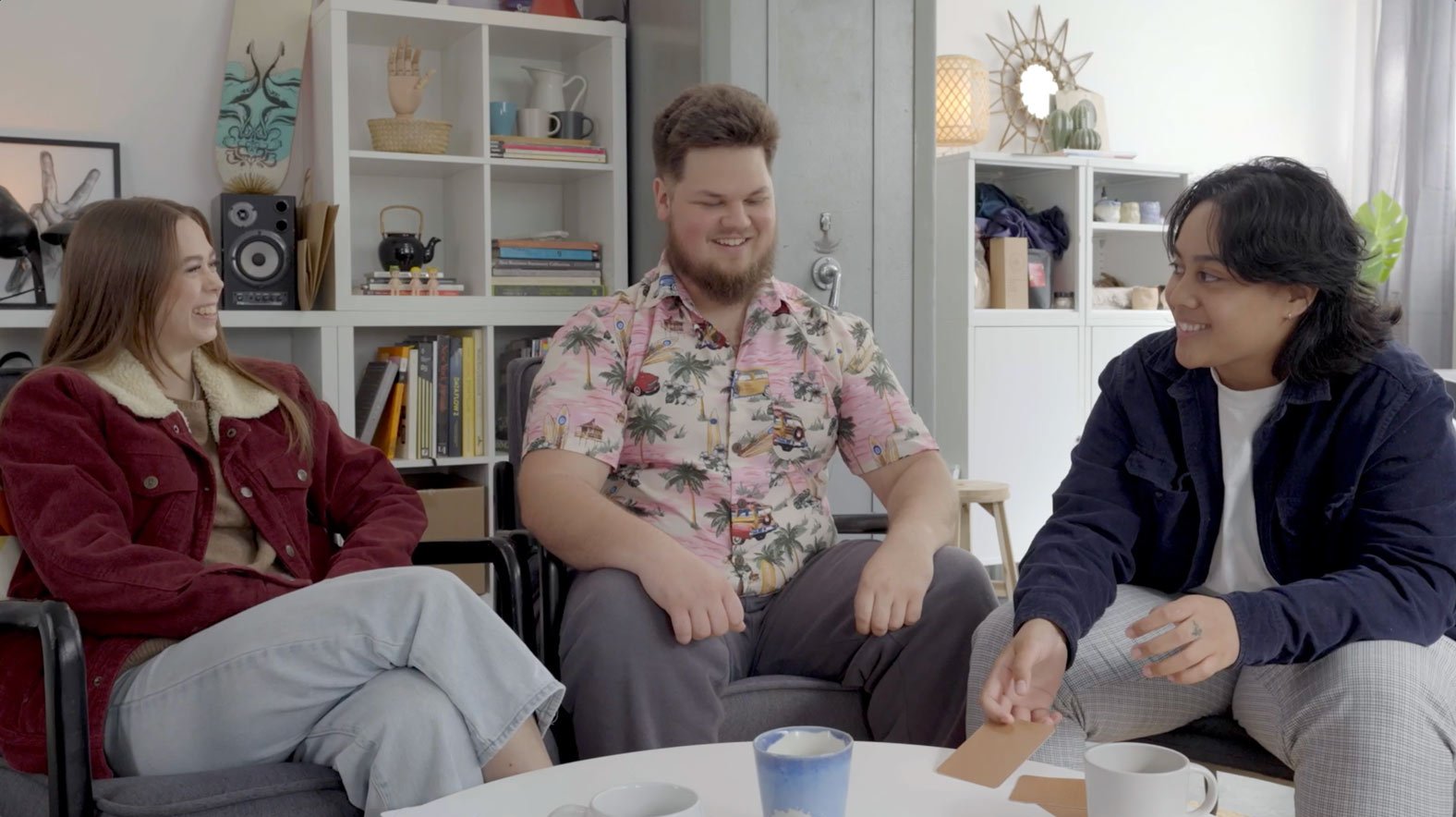Knowledge share
It's one thing to co-design, it's another to co-create.






So, what is co-design? We see co-design as an approach that allows us to create with a community, rather than simply for a community. It's taking lived experience, diverse perspectives and professional experience and combining it to develop a product that is uniquely suited to it's target audience – something audiences feel proud of, feel genuine inclusion of, and become advocates for.
Co-design is great way to design for projects that have social conscience, that set out to inform, to educate, to make the world a better place – these are the projects that we love to work on, and the kind that we've come to specialise in.
We've got a lot of experience in co-design, and have developed a framework that is adaptable to many different project needs, working with indigenous communities, people with disability, at-risk youth, recovering victims of addiction, among many others.
And with this experience, we've developed a methodology that goes beyond co-design. In our experience, co-design is a model that is exceedingly more effective when the groups engaged are involved
not only during conception, but throughout the process of design, creation and execution. The principles that make good co-design work need to be employed not just at the design stage, but throughout the life of the project.
We call this co-creation.
What is co-creation?
Co-creation is an extension of co-design, and addresses some of the stumbling blocks of co-design through firstly applying many of its key tenets more thoughtfully and thoroughly throughout a creative project.
It's working inclusively during the design phase to establish a framework for creation, identify possible pathways and providing navigation where necessary to help elevate ideas to their full potential.
It's deeper community connection – we don't dismiss the work group when the creation process starts, we work together all the way through. This helps create truer, more authentic outcomes, allowing co-creation partners to feel true ownership over the end product, and become advocates for it.
It's documenting the process – whether this is written, audio or video. During co-creation, stories emerge, and these stories can inform the goals of the project, change the perspective, and sometimes are so powerful they can change the project itself, for the better. There is insight and perspective that can only be gained from lived experience and human connection that cannot be captured through research alone, and our process recognises and embraces this.
A key tenet of co-design and co-creation is: “The process changes us, and we must let it.”
It's developing materials that are specific to community needs – by asking the right questions, facilitating conversation, and the most important part, listening. Working alongside key individuals respectfully and inclusively, and taking a participative, empathetic approach, we can empower communities to be part of the solution with strategies and resources that are relevant to them. Ideas are tested, adapted, shaped and evolved, worked and reworked, until they are a true and authentic representation of the community's perspective.
It's empowering our audiences. Audiences see themselves reflected in what we create, and it resonates with them immediately. This is achieved through inclusion of local languages, use of community specific words, voices, faces, concepts and stories. It makes our audience part of the solution, gives them strategies and resources, real human connection, and builds genuine trust and respect.
Showreel // Co-Design & Co-Creation

